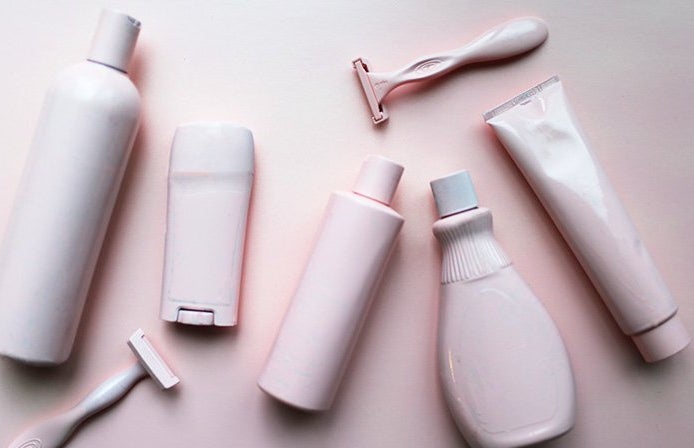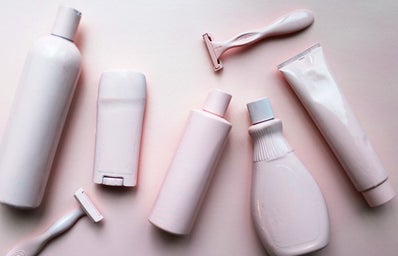It all started during the spring semester of my senior year in high school, on my 10th hour of perusing through TikTok during the week when I came across The Ordinary’s glycolic acid toner for the first time ever. The aesthetic, clean packaging of the product, and the affordable price point, along with the creator talking about the product’s ability to clear up texture irregularities, was enough to sell me on the product. So, I dragged my dad to Sephora after school, and decided to add the glycolic acid toning solution to my non-existent skin regimen.
After a couple of weeks, my mom pointed out that I now had more acne and marks on my skin than I had ever experienced before — but, set in my ways, I decided that there was no way the product was not working for my skin. Thus, I set out on extensive research and came across the phenomenon of purging: your skin’s reaction to the introduction of a new active ingredient. This lasted for about a month, and I decided that I should perhaps stop using this toner, as it might not be suited for my skin.
However, prom season was approaching in a few weeks, so instead of letting my skin breathe after this, I decided that salicylic acid (which I saw in an Instagram infographic) would perhaps help with the presumed acne, so I invested in CeraVe’s Salicylic Acid Cleanser. To its credit, it really helped with the pores on my forehead, but coupled with my reluctance to use sunscreen during sunny May in California, the inflamed acne on my cheeks just got worse. Essentially, I had bombarded my skin with various active ingredients, masks, and treatments toward the end of my senior year.
During the summer, while I was still on SkinTok, I miraculously came across a TikTok talking about a broken skin barrier. Upon careful examination, I realized that the inflammation on my cheeks was not, in fact, regular acne, but inflamed spots that were signs of a damaged skin barrier which often causes redness, sensitivity and irritation, flakiness, and dryness. After this epiphany, I started researching more regarding skin barrier repair on my trusted source, TikTok, as well as online articles and blogs, and reached one conclusion: moisturize.
The key to repairing a skin barrier is to restore the pH of your skin, which essentially means following a very simplified skincare routine and stopping the use of any active and strong skincare ingredients. Instead, incorporate ceramides, hyaluronic acid, and other hydrating ingredients into your routine. Seems easy enough, right? But it was not for me. As someone with combination skin with an extremely oily T-zone, the thought of using strictly hydrating products terrified me. But I realized that I could soon balance a clarifying and hydrating skincare routine. After my research, I started looking into everything skincare: the different skin types and active ingredients, the difference between AHAs and BHAs, the pairing of ingredients and the importance of patch tests, and the actual layering and steps to building a skincare routine.
The first stage of my routine to recovery included stowing away all skincare products with active ingredients. I switched from a foaming cleanser to Cetaphil’s gentle cleanser, which consists of Glycerine, Vitamin B5, and Vitamin B3. I continued to use my Neutrogena Hydroboost Water-gel moisturizer which is a hydrating, lightweight moisturizer that has always worked for my oily skin. Then, I decided to incorporate ceramides in my routine with Byoma’s hydrating serum with ceramides to boost barrier repair. Lastly, the two most important products I used were La Roche-Posay’s Cicaplast Balm at night, and Neutrogena’s water gel sunscreen, which melts into your skin without adding a heavy layer, while also ensuring sun protection. The La Roche-Posay Cicaplast Balm was by far the most effective product I have ever used; applying a pea size amount of this cream at night over the affected areas (works on inflammation, dryness, or even acne) got rid of more than half my inflamed spots overnight.
I stuck to this routine for about a month and decided to introduce some new products. I soon learned that snail mucin is quite an effective yet soothing ingredient for skincare. So, I invested in Peach Slice’s snail mucin toner, which was honestly the most effective toner I’ve used. Not only did it further clean my skin, but it also helped with skin congestion, overall skin health, and the appearance of my skin. Another product was Good Molecule’s Niacinamide Serum. Niacinamide is known to strengthen the skin barrier, so I recommend adding this serum after most of the damage control has been done. It is, however, not always recommended for sensitive skin, so I advise looking into the strength and formulation of this product as well as patch testing it before incorporating it into your routine. Pairing this niacinamide serum with hyaluronic acid during the day, along with a ceramide serum at night, effectively clears my skin while simultaneously hydrating it.
My parting advice to anyone looking to start and establish a skincare routine is to primarily use soothing and gentle products, and to thoroughly research all skincare ingredients before incorporating any active ingredients in your skincare routine. Most of all, keep it simple! Your skin needs to breathe.
Can’t get enough of HC UMass Amherst? Be sure to follow us on Instagram, listen to us on Spotify, like us on Facebook, and read our latest Tweets!





